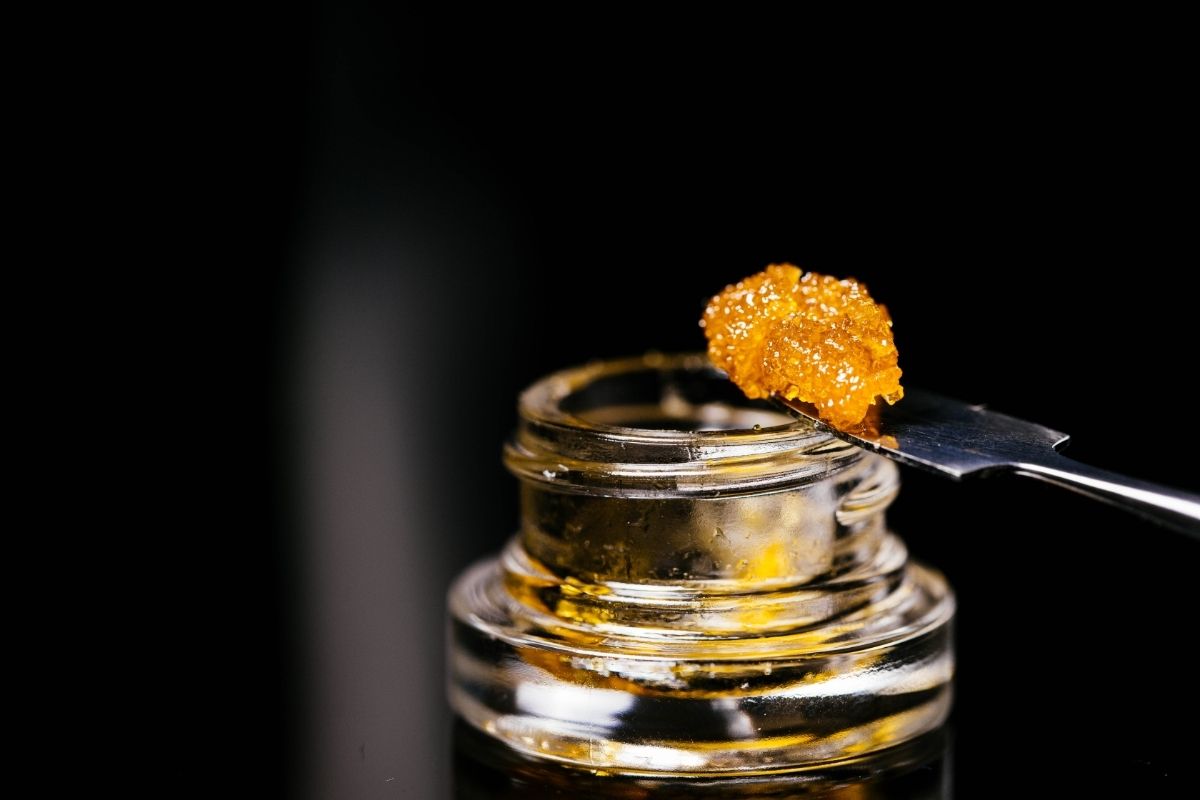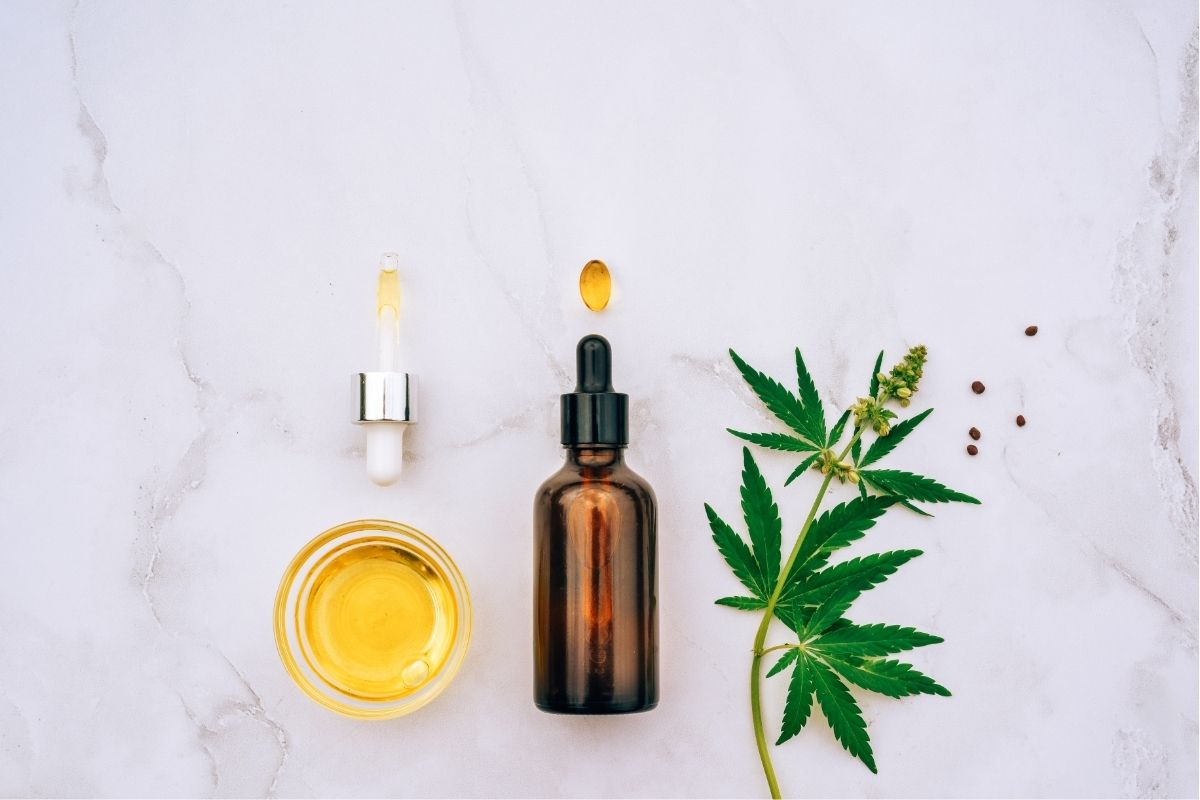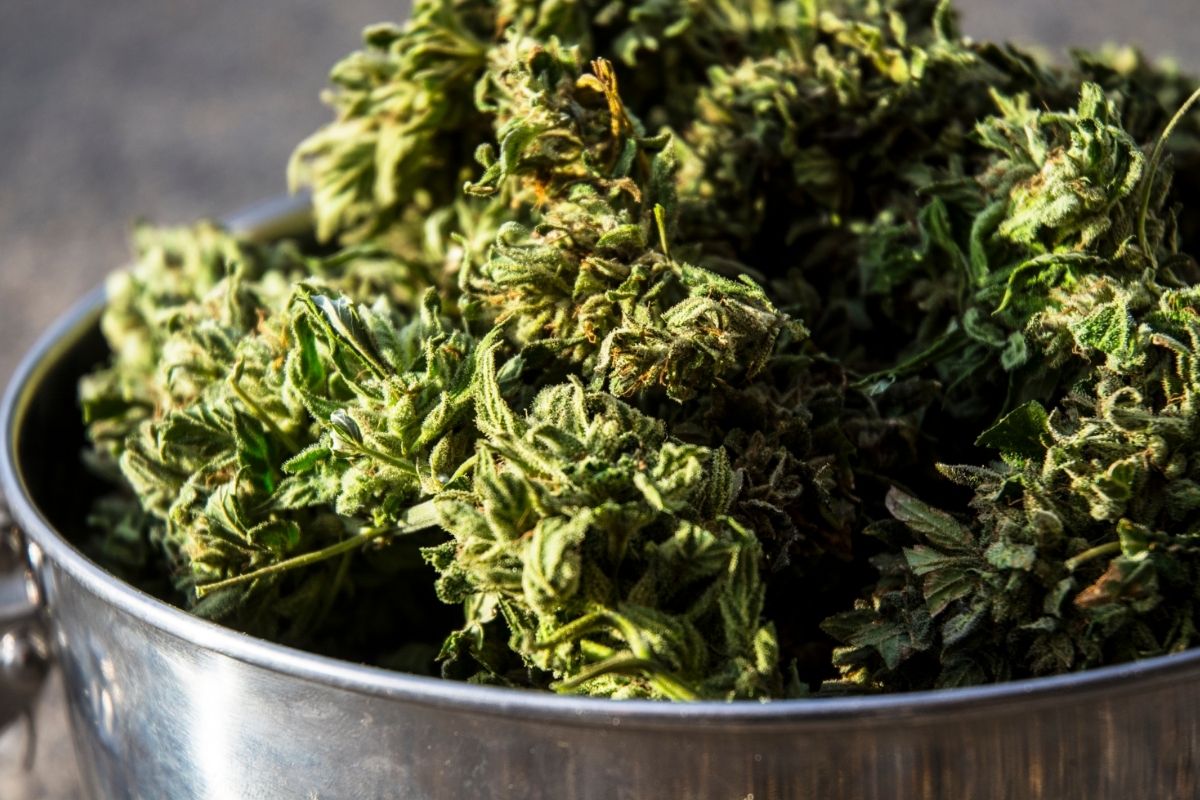Coconut oil has become increasingly fashionable in the last few years as its health benefits and ease of use are renowned.
If you prefer edibles as a means of getting your cannabis fix then cannabis coconut oil is an easy way to do so.
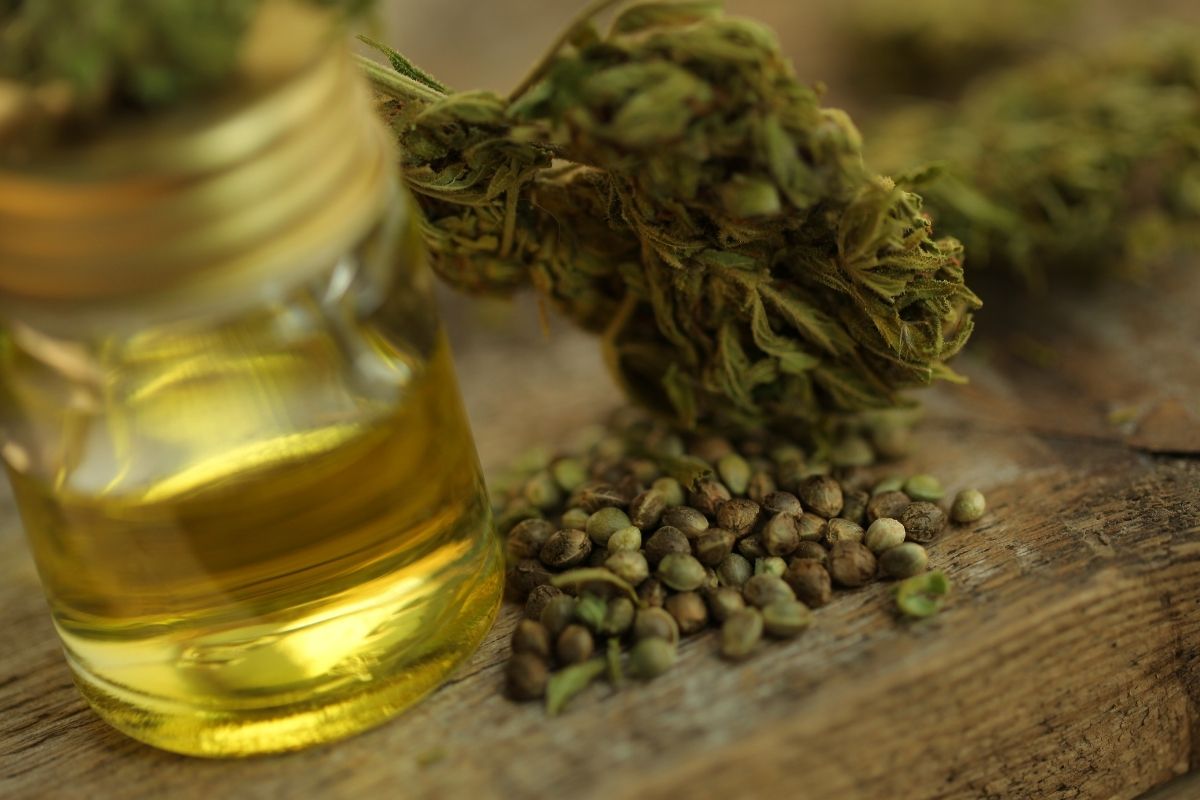
No need to light up and you can have it ready in a few hours with only a few pieces of equipment needed for the job.
Look after your lungs and still feel the buzz with some homemade cannabis coconut oil.
In this guide, we will look at the benefits of cannabis coconut oil and coconut oil itself. We will also look at how to create cannabis coconut oil using some everyday kitchen ingredients.
The Benefits Of Cannabis Coconut Oil
By infusing coconut oil with cannabis, you have a readymade and simple way of enjoying all the benefits that the two ingredients have to offer.
While it may take a while to achieve your finished product, it would be worth it as coconut oil is so versatile. You can eat it straight up, cook with it, or use it in a drink.
Of course, smoking a joint is the typical way of consuming the drug yet creating cannabis coconut oil is a great way too.
It may even be safer as you do not inhale the drug and run the risk of lung damage as you would smoking any substance.
If you do not clean your bong or pipe as often as you should then the resin buildup could be even more dangerous. With coconut oil, those problems do not exist due to how you consume it.
Cannabis coconut oil is just one of those edibles that do not create a strain on the lungs. By ingesting the substance through the digestive system there is little effort to get the sensation you desire.
There are other methods on offer such as topicals, tinctures, or transdermal patches yet cannabis coconut oil is highly fulfilling and simple to use.
Aside from the lack of smoking, cannabis coconut oil is incredibly versatile in the form it is presented.
There are also the benefits that you may not be able to see such as the antimicrobial effects.
Around half of those fatty acids are comprised of lauric acid which can kill off fungi, bacteria, and common viruses.
With cannabis, specifically the cannabinoids, those antimicrobial effects are two-fold.
For those who suffer from seizures, not only can the cannabis be helpful but the coconut oil too.
Coconut oil can also form a crucial part of the ketogenic diet which can be helpful for those who suffer from seizures due to being high in fats and low in carbs.
The ketogenic diet can reduce the rate of seizures in children, specifically those who suffer from epilepsy, as it can induce ketosis.
Of course, the benefits of cannabis for those who suffer from seizures have been recognized.
The assistance that CBD can offer has resulted in legal and FDA-approved medications specially designed for those who suffer from epilepsy.
By using it in a versatile form, such as coconut oil, the means of ingestion become so much easier.
The Benefits Of Coconut Oil
For cosmetic purposes, coconut oil is also beneficial and it has been found to boost the appearance of hair, teeth, and skin.
While it may seem strange for a foodstuff, coconut oil can work as a skin moisturizer, look after hair when faced with sun damage, and those antimicrobial effects mean it could be used as a makeshift mouthwash.
Coconut oil itself has been highly regarded for its creamy taste and healthy fatty acids that have several health benefits on their own compared to other cooking oils.
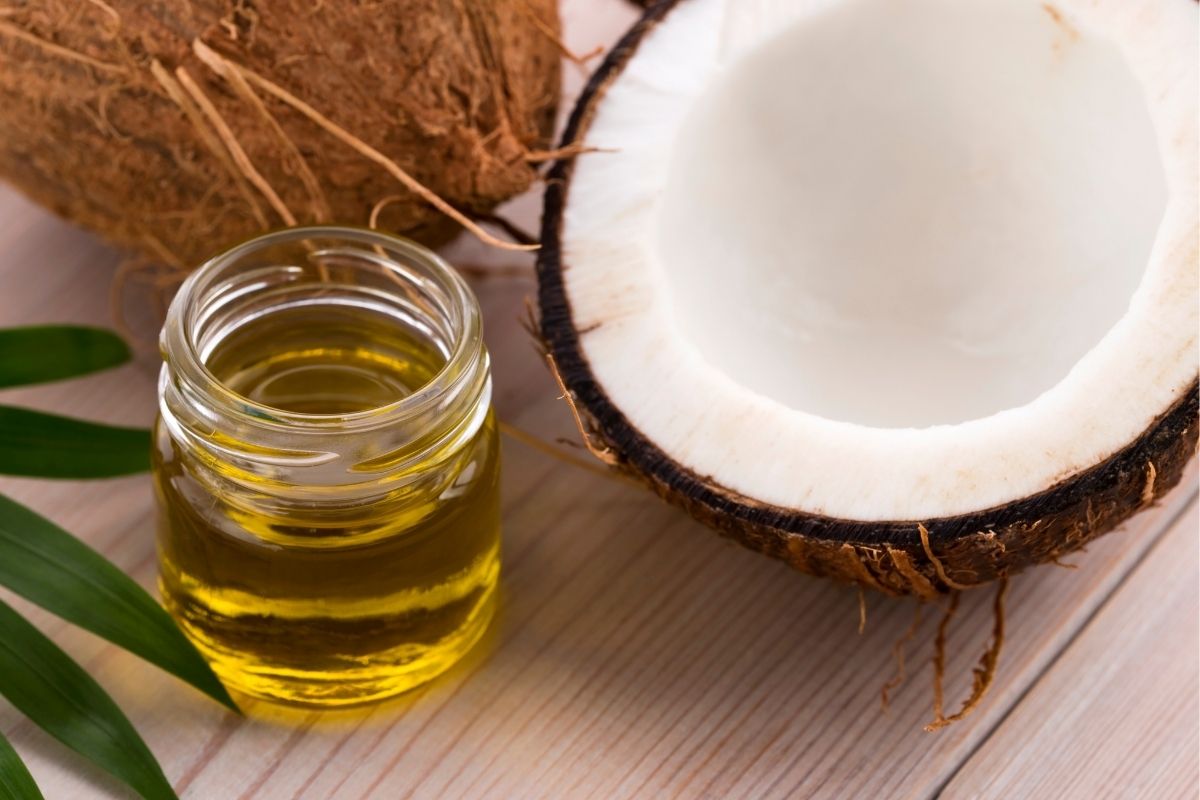
The saturated fats that come with coconut oil are taken in by the body and actively boost fat burning.
Coconut oil also can fight the good fight against heart disease by raising good cholesterol and also providing the brain and body with vital energy.
To ingest coconut oil and feel those benefits, you can simply use it as a replacement for butter.
That should mean cooking with it as you would a vegetable oil or sunflower oil, you would be using up quite a lot if you used it instead of butter in baking.
You could spread some coconut oil instead of butter on toast then layer it with some peanut butter or jam.
Finally, try adding a small spoonful of coconut oil to your tea or coffee as a creamer.
The Equipment And Ingredients You Will Need To Make Cannabis Coconut Oil
It should not be too much hassle to create your batch of cannabis coconut oil. You will already have a cannabis grinder and the best way to use this recipe is with an oven.
An oven-ready baking dish and a sheet of aluminum foil should already be in your kitchen.
The cheesecloth will not be hard to find either and a mason jar is simply to keep the finished product fresh for use.
Equipment
- Cannabis Grinder
- Cheesecloth
- Oven-ready baking dish
- Aluminum foil sheet
- Mason Jar
Ingredients
The dosage for your cannabis coconut oil is important so do not stray from seven grams of cannabis for each half a cup of coconut oil.
After you have finished your recipe, you may want to sample it and you ought to keep it low and slow to prevent overpowering yourself.
- Half cup of coconut oil
- Seven grams (quarter ounce) of cannabis flower
How To Make Cannabis Coconut Oil: A Step-By-Step Guide
As long as you are comfortable working with an oven, straining the liquid, and are fully aware of how cannabis becomes activated then making cannabis coconut oil should not pose a problem.
Baking The Cannabis (The Decarboxylation Process)
The first step is to ensure that the cannabis is activated which is done through a process known as decarboxylation.
Preheat the oven to 215°F and grind the cannabis until it is as small as possible, just as you would normally.
Cover your baking dish with a layer of the ground cannabis then seal it in with the sheet of aluminum foil.
Set your oven time for half an hour and the cannabis should be promptly activated as you do want to feel the full benefits of the drug.
Take the baking dish out of the oven and ensure that the seal remains on.
Melt The Coconut Oil
If you are preparing your cannabis coconut oil in summer then the coconut oil may already be melted which is ideal. In colder temperatures, the oil can harden and resembles butter but it can still be melted.
You can use the microwave or simply melt it in a saucepan over the stove at a low temperature.
Melt the coconut oil and the cannabis should be cooling at the same time, a period of around 15 to 20 minutes should be enough.
Infusion
Remove the aluminum foil that has been sealing your cannabis and pour the melted coconut oil in. Make sure all the cannabis has a fair coating and you can use a spoon to stir it all in.
Grab the aluminum foil and cover the baking dish again as it will be returned to the oven for another hour and a half.
About halfway through the cooking time, give the mixture a quick stir to ensure that all the cannabinoids are evenly covered.
Straining
Take out the baking dish from the oven and let it cool down, this may take a while but you want to make sure you can handle it properly.
Meanwhile, place a double layer of the cheesecloth over the container (ideally a mason jar).
Just when the dish is cool enough to be handled securely, pour on the oil and ensure that any leftover chunky bits of cannabis are effectively strained out.
There will still be some cannabinoids in the cheesecloth so you can strain that too to get a bit more out of it.
That’s it, you now have a mason jar full of cannabis coconut oil to use. Just as coconut oil itself, it may harden in colder temperatures yet you can use it just the same way.
Cook with it and melt it down or just put it in a drink, whatever you want.
Final Thoughts
Coconut oil and its own is versatile as it can be cooked with, eaten on its own, used as a skin moisturizer, or used as a replacement for butter on toast.
Such versatility means that if you prefer to ingest your cannabis as an edible to preserve your lungs then cannabis coconut oil should be a good way to do it.
As long as you have the right equipment and a bit of time then you can have a versatile supply of coconut oil that you know can give you a buzz very easily with no need to light up.
Frequently Asked Questions
What Dosing Should I Look For In Cannabis Coconut Oil?
With any edibles, the best practice is to start low and build up from there.
Dosage is not straightforward and, as with a lot of infused edibles, you may not feel the true effects for a couple of hours, even longer.
Only take a small amount first, get a feel for the effects and then wait a bit longer until you want to try a bigger dose.
If you want to get precise about it then you need to know more about your cannabis flower, specifically the THC percentage.
The dispensary should be able to help though if you cannot find a figure, go with 15%. So if you have a flower weighing 1000 milligrams then at 15%, there is a total of 150mg of THC.
If that seems a little much then you can simply add more coconut oil though it is easier to weaken the dosing than to bring it back up.
Try not to make the mistake of over-ingestion where you take a bit more as you are not quite sure that the desired effects are quite there yet.
If you do then the true effects of your initial portion will come to the fore, just as your latest portion is just creeping in.
Such a practice can be uncomfortable and put you off trying it again, all because of a bit of impatience.
Should cannabis coconut oil be your first try for an edible then you should be careful.
Low and slow is the best policy as you can never be quite sure how your body would react and how the high might feel.
Take a small dose, see how you feel then give it another day before going again.
However, if you did want to try the effects of an edible quickly then you can try it on an empty stomach.
Even better, even a fatty snack such as peanut butter on toast or a slice of cheese around 15 minutes after.
What Is The Cannabis Infusion Ratio?
If this is your first time creating edibles then it can seem a bit daunting.
The quarter to half an ounce cannabis infusion ratio is there to help as a guideline to instruct you to use around a of plant material for every cup of oil.
There is some wiggle room about going higher or lower yet this is a safe starting point. Too much cannabis will harm the extraction and too little might not be enough to feel the desired effects.
- Quotes From The ‘Reefer Madness’ Period That Show How Far We Have Come - May 17, 2022
- 10 Tips On How To NOT Smell Like Weed - May 17, 2022
- Tropical Punch Strain Review: Everything You Need To Know - May 17, 2022

